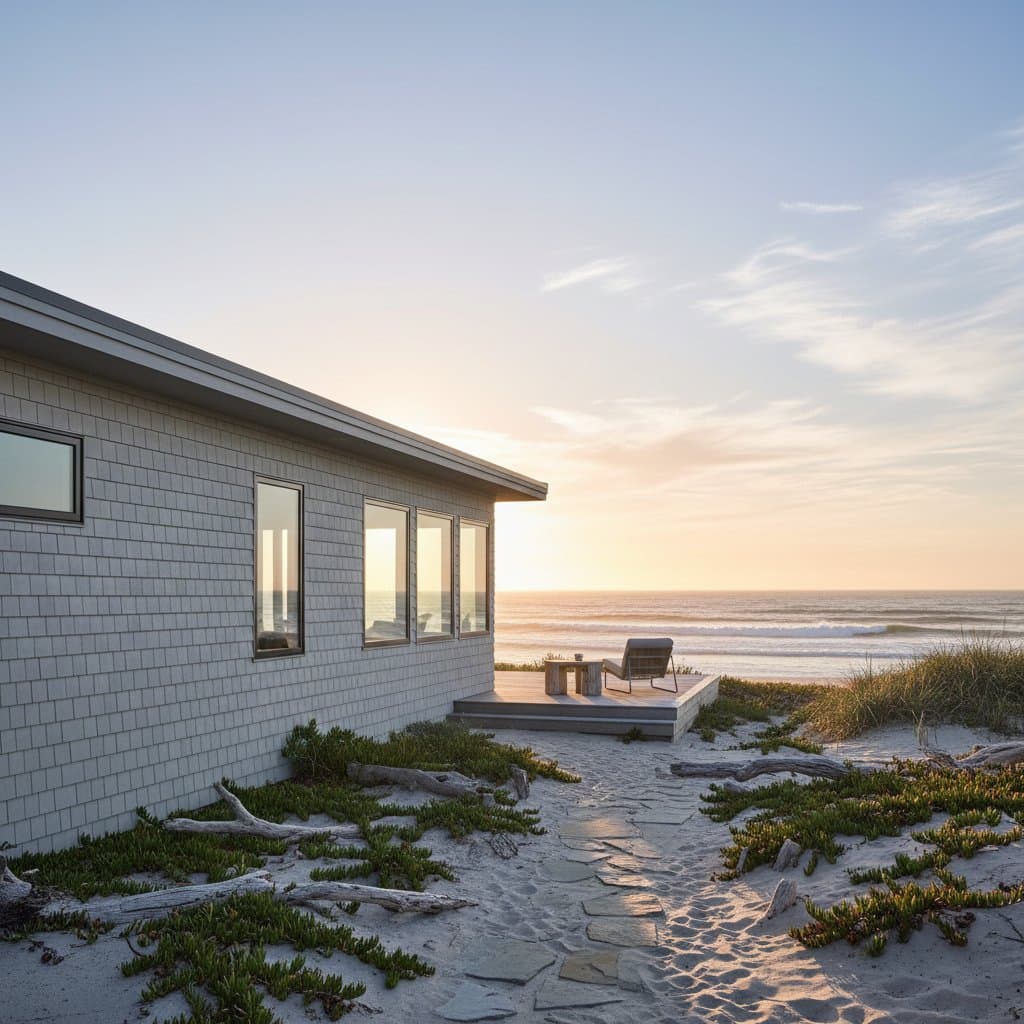How Fiber Cement Siding Reduces Beach Home Insurance by 15 Percent
Coastal locations provide stunning vistas and a serene atmosphere, yet they pose significant challenges for home maintenance. Saline atmospheres and elevated moisture levels accelerate deterioration of traditional siding materials. Fiber cement siding stands out as a robust alternative, engineered to withstand these conditions while enabling homeowners to secure insurance reductions of up to 15 percent. Insurance providers favor such durable options because they minimize claims from storm damage and erosion.
This comprehensive guide examines the advantages of fiber cement for seaside properties. It covers the mechanics of insurance savings, essential considerations for implementation, and strategies to maximize returns on this upgrade.
Factors That Determine Insurance Discounts
Insurance companies evaluate multiple elements when assessing discounts for fiber cement siding. These factors ensure that the material's protective qualities translate into tangible risk reduction. Understanding them helps homeowners prepare effectively for potential savings.
Proximity to the Shoreline
Properties situated directly along the beach encounter intensified exposure to corrosive elements and severe weather events. Structures farther inland benefit from slightly moderated conditions, which can amplify the impact of resilient siding. Even in high-risk zones, fiber cement demonstrates superior resistance to salt spray and gale-force winds, prompting insurers to offer proportional premium adjustments.
Quality of Installation
Effective installation prevents vulnerabilities such as water infiltration or structural weaknesses. Certified contractors adhere to stringent standards, incorporating proper sealing and fastening techniques tailored to coastal climates. Substandard work undermines the material's benefits, so selecting experienced professionals remains crucial for discount eligibility.
Age and Construction of the Home
Older homes may require additional reinforcements to pair optimally with fiber cement. Contemporary builds, featuring advanced framing and vapor barriers, often qualify for enhanced reductions. Insurers view these combinations as comprehensive defenses against environmental stressors, leading to more substantial premium credits.
Required Documentation
Clear evidence of the siding's installation and specifications proves essential for verification. Maintain detailed records including invoices, material certifications, and photographs of the completed work. Submitting this information to your provider streamlines the discount application process and avoids delays in realizing savings.
Steps to Plan a Fiber Cement Siding Upgrade
Undertaking a siding replacement represents a significant commitment, yet it yields enduring protection and financial advantages. For a typical coastal residence spanning 2,000 square feet, expenses generally fall between $10,000 and $25,000, with labor comprising approximately 50 percent of the total. Budgeting for premium materials and expert labor ensures long-term performance in demanding marine environments.
Essential Preparation Tips
-
Obtain estimates from at least three specialists in fiber cement applications to identify competitive pricing and reliable service.
-
Opt for pre-finished panels from reputable manufacturers, as they resist fading and peeling in humid conditions.
-
Integrate a high-performance house wrap or drainage plane beneath the siding to channel moisture away from the structure.
-
Time the project for periods of stable, low-humidity weather to facilitate precise cutting and secure adhesion.
-
Consult your insurance representative early to outline documentation needs and confirm post-installation procedures.

Expert installation maximizes durability and secures insurance incentives.
Assessing Long-Term Value and Investment Returns
Beyond immediate insurance relief, fiber cement siding elevates a property's market position and operational efficiency. Resale appraisals frequently recover 65 to 80 percent of the initial outlay, reflecting buyer demand for low-maintenance exteriors. In coastal markets, this upgrade distinguishes a home amid competitors susceptible to rapid wear.
Key Benefits for Coastal Properties
-
Delivers refined aesthetics through versatile textures and hues inspired by natural seaside palettes.
-
Extends repaint cycles beyond 15 years, minimizing disruption and preservation costs.
-
Forms a formidable barrier against humidity, preserving the integrity of interior walls and insulation.
-
Contributes to healthier living spaces by limiting mold growth and allergen accumulation from exterior breaches.
The cumulative effect positions fiber cement as a prudent choice for enduring seaside ownership.
Frequently Asked Questions on Fiber Cement and Insurance
How can I verify if my insurance policy includes discounts for fiber cement siding?
Contact your agent and furnish specifics about the material, including installation dates and supplier details. They will review policy terms to determine applicable reductions.
What maintenance does fiber cement siding demand in coastal settings?
Annual rinsing with fresh water removes salt buildup, preserving the finish. Periodic inspections for minor damage ensure continued performance without extensive intervention.
Is self-installation of fiber cement siding advisable for beach homes?
Professional assistance proves essential due to the material's weight and the precision required for coastal code compliance. Amateur efforts risk compromising warranties and insurance qualifications.
How does the cost of fiber cement compare to vinyl siding options?
Initial expenses exceed vinyl by 20 to 40 percent, yet superior longevity and risk mitigation offset this through extended service life and premium savings.
When do insurance discounts take effect following installation?
Providers typically process adjustments upon receipt of verification, applying credits to subsequent policy renewals or mid-term endorsements.
Strategies to Preserve Your Fiber Cement Siding
Sustaining the performance of fiber cement requires proactive yet straightforward measures suited to marine influences. Regular cleaning prevents corrosive deposits from etching the surface, while prompt repairs address any impact damage from debris. Integrating these practices extends the material's lifespan, reinforcing both structural integrity and insurance advantages.
Homeowners benefit from scheduling professional assessments every few years, particularly after major storms. These evaluations detect subtle issues early, avoiding costly escalations. Ultimately, diligent care transforms this investment into a reliable asset for generations of coastal enjoyment.

